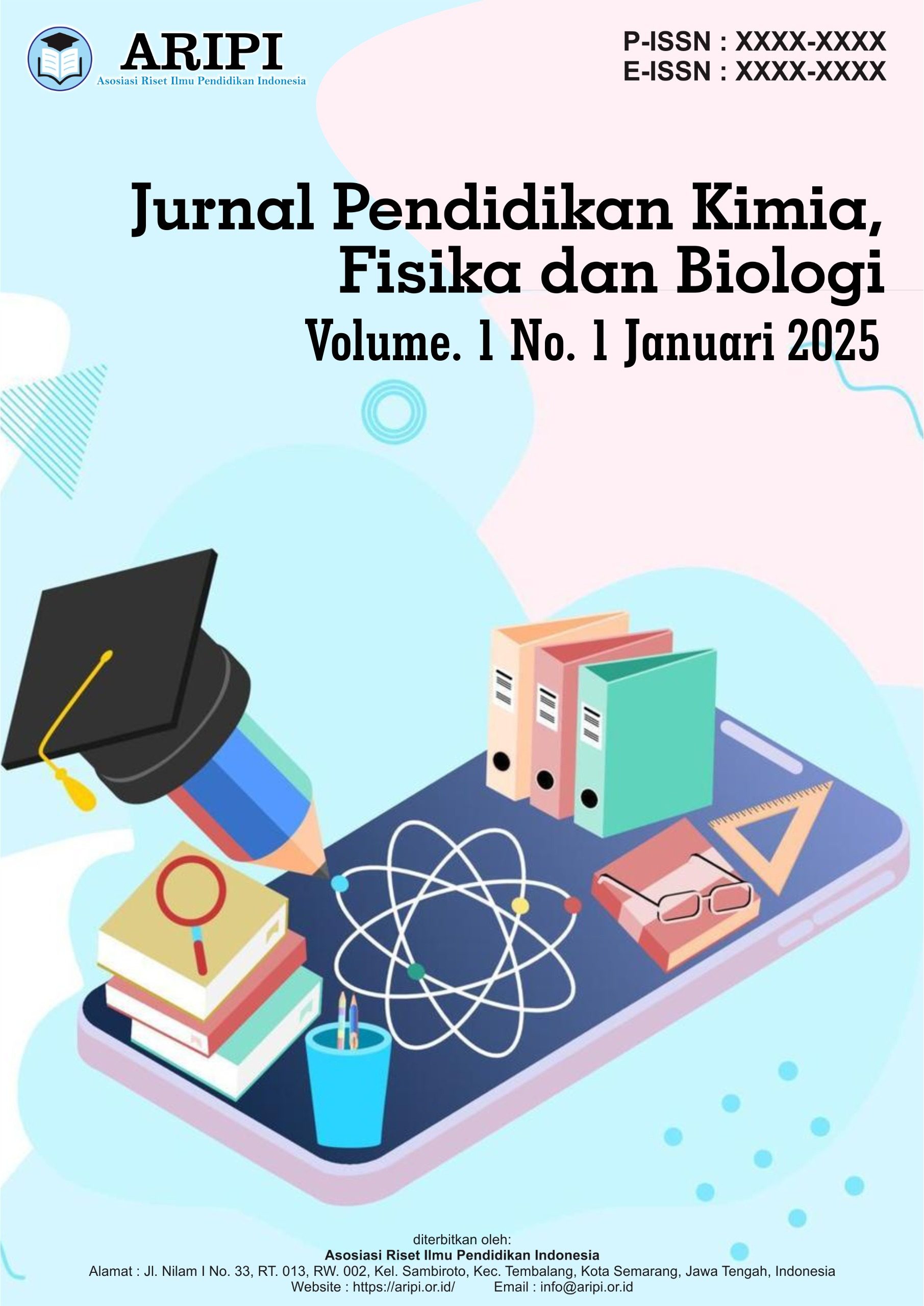Model Pembelajaran Berbasis STEM untuk Meningkatkan Pemahaman Konsep Termodinamika dalam Fisika
DOI:
https://doi.org/10.61132/jupenkifb.v1i1.163Keywords:
STEM learning, thermodynamics, concept understanding, physics education, quasi-experimentAbstract
This study aims to analyze the effectiveness of STEM (Science, Technology, Engineering, and Mathematics)-based learning models in improving students' understanding of thermodynamic concepts. The research method used is a quasi-experimental with a pretest-posttest design. The subjects of the study were high school students who were divided into experimental and control classes. The results showed that the STEM approach can significantly improve students' conceptual understanding and problem-solving skills compared to conventional learning models. The implication of this study is the need for integration of the STEM approach in physics learning in order to improve the quality of education in the modern era.
References
Astuti, I. D., Toto, T., & Yulisma, L. (2019). Model project-based learning (PjBL) terintegrasi STEM untuk meningkatkan penguasaan konsep dan aktivitas belajar siswa. Quagga: Jurnal Pendidikan dan Biologi, 11(2), 93–98.
Astuti, P., et al. (2019). Pengaruh pembelajaran berbasis proyek dalam STEM terhadap pemahaman konsep fisika siswa. Jurnal Pendidikan Fisika Indonesia, 15(2), 45–56.
Beers, S. Z. (2011). 21st century skills: Preparing students for their future. Pearson.
Bybee, R. W. (2010). Advancing STEM education: A 2020 vision. Technology and Engineering Teacher, 70(1), 30–35.
Bybee, R. W. (2013). The case for STEM education: Challenges and opportunities. NSTA Press.
Capraro, R. M., et al. (2013). STEM project-based learning: An integrated science, technology, engineering, and mathematics (STEM) approach. Springer.
Cholisoh, E. (2019). Upaya meningkatkan keterampilan berpikir kreatif dan keterampilan berpikir kritis ilmiah dengan model PjBL-STEM. Prosiding Seminar Nasional Fisika, 1(1), 59–73.
Dewi, H. R. (2017). Peningkatan keterampilan berpikir kreatif siswa melalui penerapan inkuiri terbimbing berbasis STEM. Prosiding SNPF (Seminar Nasional Pendidikan Fisika), 47–53.
Dewi, R. (2017). Pengaruh pendekatan inkuiri berbasis STEM terhadap keterampilan berpikir kritis siswa. Jurnal Pendidikan Sains, 5(1), 78–89.
English, L. D. (2016). STEM education: Perspectives on policy and practice. Springer.
Erduran, S., & Dagher, Z. (2014). Reconceptualizing the nature of science for science education. Springer.
Hmelo-Silver, C. E. (2004). Problem-based learning: What and how do students learn? Educational Psychology Review, 16(3), 235–266.
Honey, M., Pearson, G., & Schweingruber, H. (2014). STEM integration in K-12 education: Status, prospects, and an agenda for research. National Academies Press.
Johnson, C. C. (2013). Implementing STEM education policy: Challenges, strategies, and lessons learned. School Science and Mathematics, 113(4), 111–118.
Kelley, T. R., & Knowles, J. G. (2016). A conceptual framework for integrated STEM education. International Journal of STEM Education, 3(1), 1–11.
Laboy-Rush, D. (2011). Integrated STEM education through project-based learning. Learning.com, 12(4), 1–12.
Llewellyn, D. (2013). Inquire within: Implementing inquiry-based science standards in grades 3-8. Corwin Press.
Makahinda, T., Silangen, P., & lainnya. (2022). Penerapan model pembelajaran project-based learning dengan pendekatan STEM pada materi hukum-hukum termodinamika. Charm Sains: Jurnal Pendidikan Fisika, 3(2), 80–86.
Maulana, M., & lainnya. (2020). Penerapan model project-based learning berbasis STEM pada pembelajaran fisika. Jurnal Teknodik, 39–50.
Melinda, V., & Zain, A. (2021). Pengaruh pembelajaran STEM terhadap pemahaman konsep dan sikap ilmiah. Jurnal Pendidikan Sains, 9(1), 56–64.
Meltzer, D. E. (2002). The relationship between mathematics preparation and conceptual learning gains in physics: A possible hidden variable in diagnostic pretest scores. American Journal of Physics, 70(12), 1259–1268.
Moore, T. J., & lainnya. (2014). STEM integration in K-12 education. Journal of STEM Education, 15(3), 15–25.
Sanders, M. (2009). STEM, STEM education, STEMmania. The Technology Teacher, 68(4), 20–26.
Susanti, R. (2022). Evaluasi efektivitas pembelajaran berbasis STEM pada materi fisika. Prosiding Seminar Nasional Pendidikan Sains, 23–35.
Umalia, L. L. P., & Ratnasari, F. D. (2024). Pengembangan media pembelajaran interaktif berbasis website terintegrasi STEM untuk meningkatkan pemahaman konsep peserta didik pada materi teori kinetik gas. Unnes Physics Education Journal, 13(3).
Wang, X., et al. (2011). STEM education in secondary schools: Understanding students’ and teachers’ perspectives. Journal of STEM Education, 12(1), 23–32.
Wibowo, A. (2023). Model pembelajaran STEM dalam meningkatkan kemampuan pemecahan masalah. Jurnal Inovasi Pendidikan Fisika, 7(2), 120–130.





